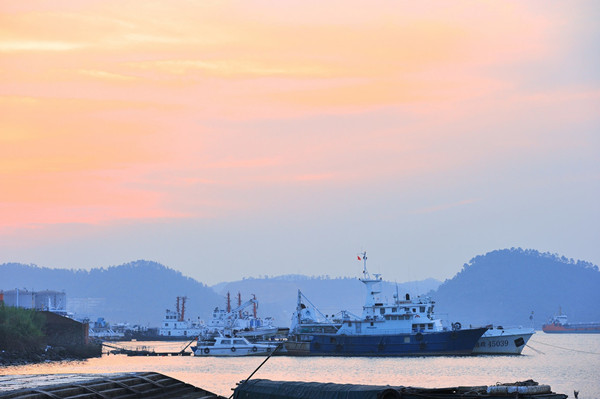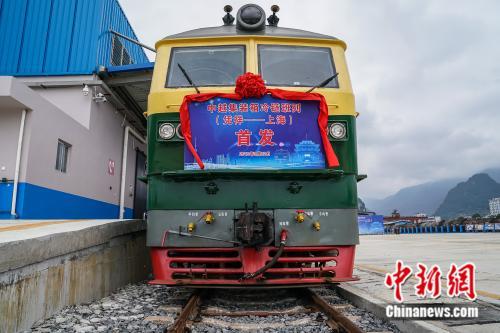Guangxi accelerates opening-up efforts


Fangchenggang Port, approved by the State Council in March 1969, expands its open area in 2018. [Photo/IC]
Guangxi will continue to promote opening-up, accelerate the construction of the New Western Land and Sea Channel, and will further integrate into the development of the Guangdong-Hong Kong-Macao Greater Bay Area, the driving engine for regional growth, said Lu Xinshe, the region's Party secretary on March 18 at a sharing session on the policies and developmental direction achieved at the nation's annual two sessions meeting.
Push forward the construction of the New Western Land and Sea Channel.
As one of the three signature projects of the New Western Land and Sea Channel, the construction of Qinzhou Port East Container Freight Station is expected to be completed by the end of June, which will open key nodes in the the sea-rail combined transportation of the New Western Land and Sea Channel.

The first China-Vietnam cold-chain freight train leaves Pingxiang for Shanghai on Feb 22. [Photo/chinanews.com]
The region will research and create a complete scheme to promote the introduction of the General Plan for the New Western Land and Sea Channel. Its logistics size will be scaled up, and the sea-rail combined transportation routes, including Chongqing-Guangxi, Chengdu-Guangxi, and Yunnan-Guangxi will continue to grow, as well as the Beibu Gulf-Chongqing and Sichuan Cold Chain Express Train.
Guangxi will overcome transportation and traffic "bottleneck" issues and upgrade the market competitiveness of the channels through these developments, and it will optimize operating service of the trunk lines along the sea-rail combined transportation, as well as continue to enhance the core competitiveness of the Beibu Gulf.
Over the past year, Guangxi witnessed a steady growth of the trains and regular ships running in the main lines of the new western channel. Five express lines connecting Guangxi with Chongqing, Sichuan, Gansu, Guizhou, Yunnan, and Qinghai were completed and opened to traffic. A total of 1,154 trains were operated in 2018, and cargo ship lines from Beibu Gulf ports to Singapore and Hong Kong have regularized their operations, running as many as 406 ships.
Driven by the New Western Land and Sea Channel, Guangxi's Beibu Gulf ports achieved an annual cargo handling capacity of 2.9 million metric tons in 2018, an increase of 27 percent, recording the highest growth rate among China's main coastal ports.
The efficiency of customs clearance has improved, and the region's average time for import and export was 22.31 and 1.48 hours respectively in December 2018, ranking 5th and 11th in the country.
MOST POPULAR
Editors' Picks
 Infographic:
China's 5G subscriptions hit a new milestone
Infographic:
China's 5G subscriptions hit a new milestone
 Database:
China Economic Data Tracker
Database:
China Economic Data Tracker
 Infographic:
China extends visa-free transit to 240 hours
Infographic:
China extends visa-free transit to 240 hours




